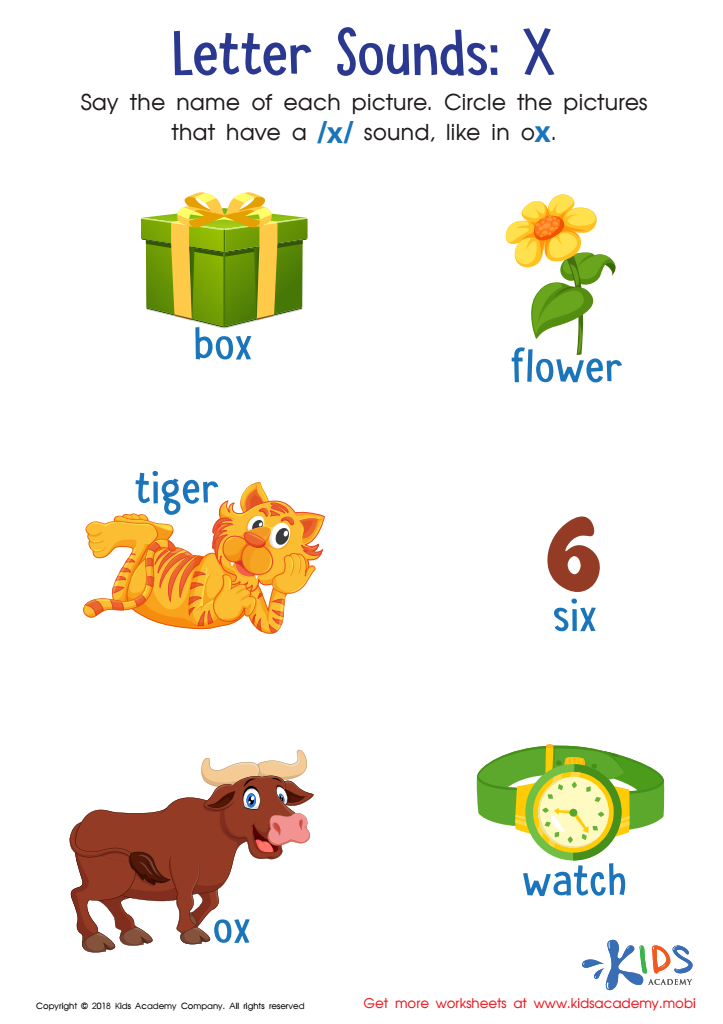Phonics Skills Normal Letter Sounds Worksheets for Ages 3-5
4 filtered results
-
From - To
Boost early reading skills with our Phonics Skills Normal Letter Sounds Worksheets, designed specifically for ages 3-5. These engaging and colorful worksheets help young learners identify and practice letter sounds, laying a strong foundation for future literacy. Aligned with early childhood education standards, each worksheet offers fun activities that promote phonemic awareness, making learning interactive and enjoyable. Whether at home or in the classroom, these resources support teachers and parents in nurturing a love for reading. Explore our variety of activities to enhance phonics knowledge, improve listening skills, and transform early education into a joyful experience! Start your phonics journey today!


Letter Q Sounds Worksheet


Letter B and C Sounds Worksheet


Letter X Sounds Worksheet


Letter l and M Sounds Worksheet
Phonics skills, particularly understanding normal letter sounds, are foundational for young children's literacy development. For ages 3-5, this crucial early stage sets the tone for future reading and writing success. When children grasp phonics, they can decode words more easily, enabling them to sound out and recognize new words independently. This skill strengthens their vocabulary and comprehension, fostering a lifelong love for reading.
Parents and teachers should care about phonics because early exposure enriches children's understanding of language structure, paving the way for improved communication skills. It also builds confidence; as children begin to read simple texts independently, they experience a sense of accomplishment that motivates further learning. By engaging in phonics activities—like singing alphabet songs, playing rhyming games, and incorporating phonetic reading practices—adults can create a stimulating learning environment.
Moreover, mastering phonics skills contributes to academic achievement. Early readers often outperform their peers in later grades since they have established the essential strategies needed for more complex texts. By investing time and energy into developing these skills during the ages of 3-5, parents and teachers can ensure their children are well-equipped for future educational success, setting the groundwork for effective lifelong learning.
 Assign to My Students
Assign to My Students














